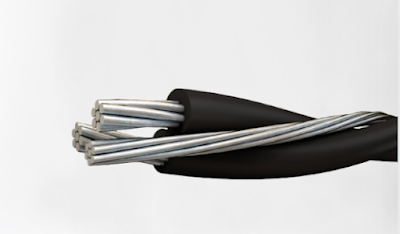What are Type 2S Cable Ties?
Introduction:
In today's interconnected world, cable management is essential for maintaining organization, safety, and efficiency in various industries and applications. Cable ties are commonly used to secure and bundle cables, wires, hoses, and other components, preventing tangling, damage, and clutter. Type 2S cable ties are a popular choice for cable management due to their versatility, durability, and ease of use. In this comprehensive guide, we'll explore the features, benefits, and applications of Type 2S cable ties, helping you understand why they are an indispensable tool for cable management in a wide range of settings.What are Type 2S Cable Ties?
Type 2S cable ties, also known as self-locking cable ties or zip ties, are fastening devices used to bundle and secure cables and wires. They are typically made from nylon or other durable materials and feature a unique design that allows them to securely fasten around cables and other objects without the need for additional tools or fasteners. Type 2S cable ties consist of a flexible strap with evenly spaced teeth on one side and a small ratchet mechanism on the other side. When the strap is inserted through the ratchet mechanism and pulled tight, the teeth engage, creating a secure and tamper-resistant fastening.Features and Benefits of Type 2S Cable Ties:
Type 2S cable ties offer a variety of features and benefits that make them an ideal choice for cable management tasks. Some of the key features and benefits of Type 2S cable ties include:a. Versatility:
Type 2S cable ties are suitable for a wide range of applications, including electrical wiring, automotive, aerospace, telecommunications, construction, and home improvement projects. They can be used to secure cables, wires, hoses, pipes, tubing, and other objects in place, making them a versatile solution for various industries and settings.
b. Durability:
Type 2S cable ties are typically made from high-quality nylon or other durable materials that are resistant to moisture, chemicals, UV radiation, and temperature extremes. This makes them suitable for use in indoor and outdoor environments, as well as in harsh or hazardous conditions.
c. Ease of Use:
One of the main benefits of Type 2S cable ties is their ease of use. They can be quickly and easily installed without the need for specialized tools or equipment. Simply insert the strap through the ratchet mechanism, pull tight, and trim off the excess strap for a secure and tidy fastening.
d. Secure Fastening:
Type 2S cable ties feature a self-locking design that provides a secure and tamper-resistant fastening. Once tightened, the teeth on the strap engage with the ratchet mechanism, preventing the tie from loosening or slipping over time. This ensures that cables and wires remain securely bundled and organized, reducing the risk of damage or accidents.
e. Tamper-Resistant:
Type 2S cable ties offer a tamper-resistant fastening solution, making them ideal for applications where security is a concern. Once installed, the ties cannot be easily removed or tampered with without cutting or destroying the tie, providing added protection against unauthorized access or tampering.
Applications of Type 2S Cable Ties:
Type 2S cable ties are widely used in a variety of industries and applications due to their versatility, durability, and ease of use. Some common applications of Type 2S cable ties include:a. Electrical Wiring:
Type 2S cable ties are commonly used to secure and organize electrical wiring in residential, commercial, and industrial buildings. They can be used to bundle cables, wires, and conduits, as well as to route and support cables along walls, ceilings, and floors.
b. Automotive:
Type 2S cable ties are used in automotive applications to secure and route cables, wires, hoses, and tubing in vehicles. They are often used in engine compartments, undercarriages, and interior spaces to keep wiring and components organized and secure.
c. Aerospace:
In the aerospace industry, Type 2S cable ties are used to secure and bundle cables, wires, and harnesses in aircraft and spacecraft. They are designed to withstand high temperatures, vibration, and other harsh conditions encountered during flight.
d. Telecommunications:
Type 2S cable ties are used in telecommunications applications to secure and organize cables, wires, and fiber optic lines in telecommunication networks and infrastructure. They are commonly used in data centers, telecommunications cabinets, and outdoor installations.
e. Construction:
Type 2S cable ties are used in construction projects to secure and support electrical wiring, plumbing, HVAC systems, and other components. They are commonly used to bundle cables and conduits in residential, commercial, and industrial construction applications.



Comments
Post a Comment